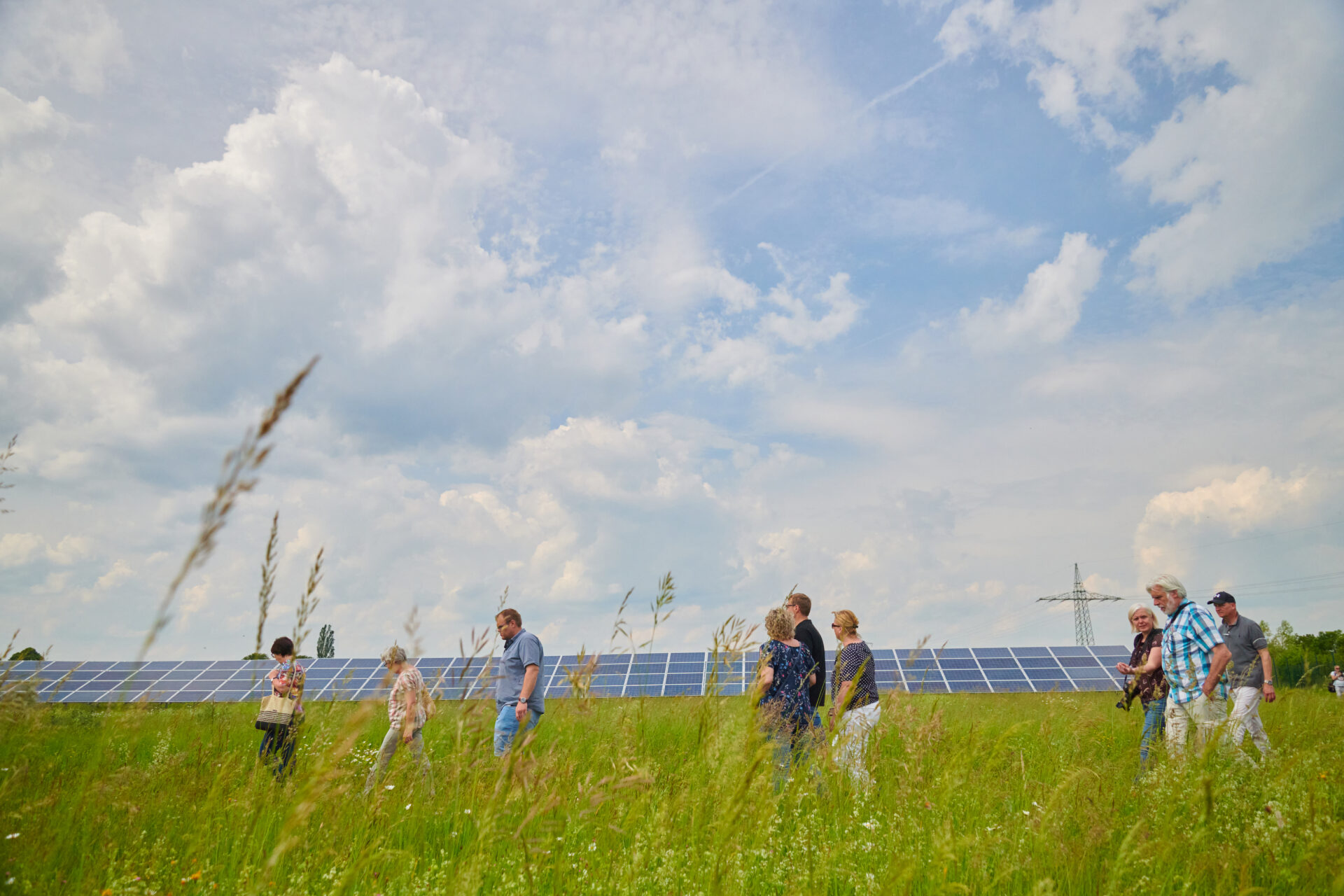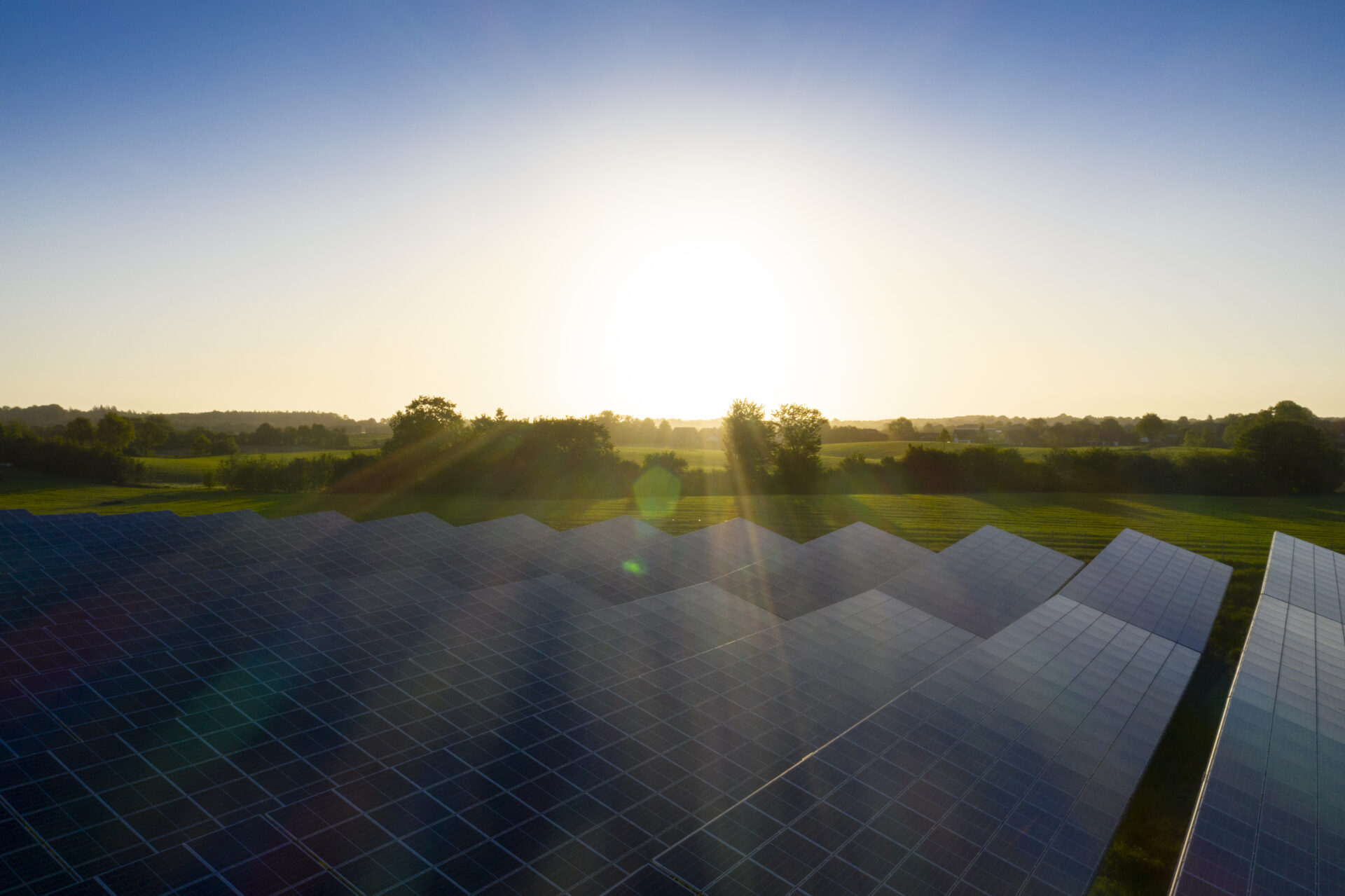Income from solar parks stabilises municipal budget and youth work
Uwe Weigelt is the first mayor of the Saxon municipality of Lossatal and has also been Managing Director of the municipal Wurzener Land-Werke since May 2022. He invested in solar parks very early on - and has had consistently positive experiences with them. The municipality benefits from lease and sponsorship income. Next, Weigelt wants to produce green hydrogen.

SonneSammeln: As mayor, you are one of the pioneers who have campaigned in favour of solar parks. What was the deciding factor?
Uwe Weigelt: It was a confluence of fortunate circumstances. On the one hand, the municipality of Lossatal is located in a real sunbelt in Saxony with an incredible number of hours of sunshine. This was also confirmed by the solar atlas. When I became mayor in 2008, there was also a need for regulation in the industrial estate. Areas that belonged to the municipality and on which building rights existed had not yet been commercialised and there was not much demand. This developed into a locational advantage in 2008. The investors first looked to see where they could find the most hours of sunshine. And then they came to see me in the town hall and we thought about it together. I had the land and the investors had the courage and desire to invest. And so large solar parks were quickly established on the very large areas in the municipality. We also negotiated quite well at the time and realised good revenues. This did not have a negative impact on the operators due to the initially very high feed-in tariffs.
SonneSammeln: How quickly did it take from the idea to the opening of the first solar park?
Uwe Weigelt: Well, I had access to the land. That started pretty quickly in 2008. The first solar park was completed in 2010.
SonneSammeln: What were the decisive arguments in favour of ground-mounted PV systems for you?
Uwe Weigelt: On the one hand, the areas had already been developed at a very early stage at great expense. In the mid-1990s, the local authority invested several million in the development of this industrial estate. However, due to the lack of demand, agriculture had settled there. I found that very inappropriate, because taxpayers' money was involved. A solar park was therefore a very welcome improvement in crop rotation for the benefit of the community. Financially, too, it was a quantum leap: with agricultural use, the yields were 150 euros per hectare; with the solar parks, the rent was then 2,500 euros per hectare per year. On the other hand, it wasn't just about earning more money. For us on the local council, it was of course also a challenge to position ourselves in favour of clean energy generation.
SonneSammeln: How was the idea received by the local council?
Uwe Weigelt: At the time, we were in the middle of a merger process between the still separate municipalities of Falkenhain and Hohburg. Some people had concerns as to whether the municipality would actually be financially involved in the long term. Overall, however, the mood was: "We feel really good about the decisions we have made." And we also entered into a strategic partnership with our plant operators right from the start. The operators have very generously supported our community here, which has of course also helped to build trust. Today, paragraph 6 of the Renewable Energy Sources Act (EEG) means that the local community can receive up to 0.2 cents per kilowatt hour from the solar park. We didn't have this regulation back then, we were breaking new ground. Our intention was always to give the local communities the opportunity to organise things locally.
SonneSammeln: How was the community involved and what was done with the support?
Uwe Weigelt: The increased lease income and the sponsorship that the solar park operators had agreed with our clubs and our schools and kindergartens arrived directly on site. Of course, I was delighted that we were able to stabilise the work with young people in our large sports clubs thanks to the sponsorship. This is indispensable in the area of youth work. We are a large municipality, Lossatal has 110 square kilometres and 17 districts. There are requests from all corners. And of course, 5,000 to 10,000 euros a year in sponsorship is unlikely to help. Secondly, we have stabilised our own funds situation considerably. Over the last 30 years, a fairly large backlog of refurbishment work had accumulated. We were able to co-finance the schools and daycare centres largely through the additional income from the lease. Of course, we realised most of the contracts with our local company. This was very favourably received.


SonneSammeln: What happened next in your municipality? Did you develop further areas for solar parks?
Uwe Weigelt: The investors realised that the solar atlas was right and that the hours of sunshine had a very positive impact. We also installed rooftop systems and looked for additional areas for solar parks. We then redeveloped certain contaminated sites, recultivated them and used them for solar. We now have a wealth of plant operators. Word had got around that we have relatively good conditions for solar energy.
SonneSammeln: How has nature changed on these contaminated sites?
Uwe Weigelt: Our industrial estate was located along a railway line. We have quite a lot of areas there where animals and plants have been able to develop well. The population of hares and pheasants thanked us and we also experienced an increase in biodiversity in terms of insects and beetles. That was quite spectacular. To the There is also a study on biodiversity in solar parkswhich proved to be true in our project.
SonneSammeln: That's great. And what do you have planned for the future?
Uwe Weigelt: At the moment, we are in the process of sorting out the issue of further utilisation of the electricity. The feed-in tariff runs until the early thirties. We are working with Basalt AG on an idea to produce green hydrogen. There are also four wind turbines on the industrial estate. The renewable energy sector is currently developing incredibly quickly, including in the wind sector. In Saxony, there is also structural change because we are one of the regions phasing out coal. That's why Saxony also has some major funds in the near future that can be used for hydrogen and the Just Transition Fund for structural change.
SonneSammeln: Finally, one last question: What is your recommendation to local authorities who are considering a solar park?
Uwe Weigelt: Everyone at the table who is affected by the issue should always see themselves as part of the solution. This includes farmers, landowners, local authorities and solar investors. If someone sits at the table who sees themselves as a disruptive force, then there's a problem and you won't get the message across to the outside world. And another important realisation. We will not be able to avoid expanding the area if we move in the direction of renewables. But we have to differentiate. There are well-suited areas and less suitable areas. Less suitable are areas with high soil values where there is still a lot of moisture in the subsoil. It is therefore advisable to analyse the potential in order to determine where there are areas that will never produce good yields because they are very gravelly and dry areas. And there it is much easier to find a way to get the farmer on board. And I hope that Saxon and federal legislation will take another significant step towards farmers. A certain proportion of the cultivated land must be set-aside land anyway. Why don't you do that under the solar installations, because then we can work together to make the vegetation in the installations much more biodiverse. That would be my wish and my request.
The interview was conducted by Alexander Karasek and Martina Haag on 20 June 2022.






